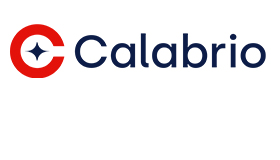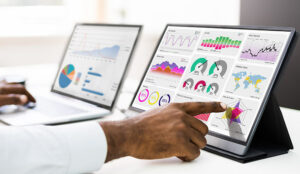Tammy Marinac of Calabrio covers the key types of contact centre analytics systems, including how they work and ways to implement them.
Analytics is one of the biggest buzzwords in the business world – and now the call centre world is buzzing about it as well. But, as with most new technologies, exciting conversations about the potential tend to race ahead of the basics. To help you get started, we’ve put together everything you need to know about call centre analytics – from how the tools work to the best ways to start using analytics to drive value for your call centre and your business.
Let’s start from the top.
How Do Call Centre Analytics Work?
Analytics tools mine data to identify patterns and trends. This data is used to provide a wide range of business intelligence, reveal insights hidden in the call centre and unlock the value of “big data”. Many businesses use analytics tools across their organisations, but there’s a massive amount of value for these tools specifically within the call centre.
Yet, of the vast amount of multichannel customer interaction data streaming into the average call centre every day, most organisations only examine around 2 percent of their customer interactions. This is typically a manual process, done through random QA and compliance checks, as well as targeted dispute resolutions.
The benefit of call centre analytics tools, however, is that they let you examine 100 percent of your customer interactions by not only converting voice data to text for analysis but also incorporating email, chat, social media, and agent desktop data so you can get a holistic view of your customer. This gives you a more robust, more accurate picture of call centre performance – and allows you to hear the unfiltered voice of the customer (VoC), revealing insights that can drive true customer-centric strategies.
What Analytics Tools Are Used in the Call Centre?
When we talk about a call centre solution, we’re referring to a suite of analytics tools that examine different aspects of call centre interactions. Call centres have five main types of analytics tools available today:
The Call Centre Analytics Toolbox
- Phonetics Analytics
- Speech-to-Text Analytics (LVCSR)
- Desktop Analytics
- Text Analytics
- Predictive Analytics
Let’s dive into what challenge each analytics tool solves in the call centre.
Phonetics Analytics vs. Speech-to-Text Analytics: Which Is Best?
There are two types of analytics commonly used in call centres to analyse voice recordings:
1. Phonetics Analytics
Phonetics analytics converts sound data to 44 English phonemes (the building blocks of speech) and matches the phonemes to words and phrases. It’s fast, light on the CPU, and, because it’s not limited by a dictionary, you can easily tune it to recognise jargon, regional accents, proprietary names and other open vocabularies. On the other hand, phonetics analytics can struggle with false positives for similar-sounding words: for example, “Grade A” might be interpreted as “grey day”.
2. Speech-to-Text Analytics (LVCSR)
Also known as Large Vocabulary Continuous Speech Recognition (LVCSR), speech-to-text analytics transcribes spoken audio to transcripts, mining them for words, phrases, and context. Speech-to-text analytics is limited by a closed dictionary (meaning it struggles with unusual words, accents, slang, etc.). It also takes more time and processing power (although new GPU-driven technologies dramatically accelerate transcription). But in return, you get a full-text transcript of every conversation, allowing rapid search and robust contextual analysis.
So, which is most important in the call centre? The answer is both. Phonetics analytics is great for efficient call categorisation and quick analysis. Speech-to-text analytics is great for ad hoc searching, in-depth investigation, and helping you find things you weren’t even looking for.
How Do I Use Desktop Analytics?
The biggest misconception around desktop analytics is that it’s a “big brother” tool for spying on your agents. In fact, most organisations use it to increase agent effectiveness and improve processes to benefit both the agent and the customer experience. Desktop analytics allows you to connect what agents and customers are saying to what your agents are doing on their desktops as they work to resolve an issue.
There are three main use cases for desktop analytics:
1. Auto Pause-and-Resume for Compliance
The most common reason call centres implement desktop analytics is to facilitate compliance with PCI, HIPAA and other regulations governing the recording of sensitive data. The pause-and-resume function automatically pauses the recording of the screen, audio and keystrokes when an agent reaches a designated field, and automatically resumes recording when the agent leaves the field. This eliminates human error without slowing down your agents, and ensures sensitive information is never recorded or stored.
2. Desktop Activity Tracking
Though this sounds suspiciously like spying, effective desktop activity tracking is actually all about empowering agents. By correlating customer interactions with agent actions, you can see specific applications or knowledge resources that drive more successful outcomes, see where lagging technology slows interactions, and identify resource gaps that hinder interaction quality. From building agent best practices to justifying investments in technology improvements and resource expansion, you can give your agents the tools to be more successful.
3. Desktop Activity Triggers
Similar to the auto pause-and-resume functionality, desktop event triggering allows you to create automated workflows based on a specific agent action or indicator. For example, a cancellation event might trigger full call recording and review, unauthorised screen access might trigger a supervisor alert, and a sale above a certain threshold might trigger an escalation for recognition or reward. Triggers can be simple, or they can use multiple criteria.
What Role Does Text Analytics Play in the Call Centre?
Roughly one-third of a contact centre’s interactions are text-based and come through non-voice channels that include email, chat, text, social media, and surveys. Text analytics tools bring comprehensive quality monitoring (QM) and analysis capabilities to all your text-based channels, and they tend to avoid many of the downsides of their phonetics and speech-to-text counterparts. The text is already transcribed, so there’s no risk of transcription error or processing time. And because no phonetic recognition is required, the risk of false positives is eliminated. For the modern, multichannel call centre, a text analytics tool is critical.
What Can Predictive Analytics Actually Do Today?
Google the term “analytics” and you’ll find the majority of results will focus on the exciting potential of predictive analytics. In the simplest sense, predictive analytics tools use current and historical data to make predictions about the future or otherwise unknown or theoretical events. Advanced predictive modelling, machine learning and artificial intelligence all drive these intelligent predictions. But beyond all the hype, what can your call centre do with predictive analytics today?
Call centres rely on predictive analytics tools to predict the outcomes that most affect the contact centre and enterprise. Advanced predictive tools leverage call recordings, quality management scores, customer surveys, Net Promoter Scores (NPS), as well as text and speech analytics and create mathematical approximations of both customer and agent behaviour. They provide predictive quality evaluation scoring and predictive NPS for 100% of customer interactions, allowing the organisation to take proactive measures to manage agent performance, improve customer engagement, and gain deeper insights into the customer journey.
There are two types of predictive analytics tools used in the call centre. Here’s how they work:
1. Predictive Evaluations
These use artificial intelligence to generate a quality score for every single customer interaction with remarkable accuracy. Calabrio’s Predictive Evaluations solution leverages previously scored quality evaluations along with speech analytics data and applies machine learning to pinpoint the characteristics of customer interactions that have the biggest impact on quality scores. The best part: machine learning continually grows smarter and more accurate as time goes on. Contact centres use this tool to drive targeted quality management – instead of having to rely on random monitoring.
2. Predictive NPS
This applies the same approach to Net Promoter Scoring. Calabrio’s Predictive NPS solution uses its machine learning algorithm to generate a predicted Net Promoter Score for every single customer interaction. This gives you a more accurate look at your NPS and enables you to make decisions – such as targeting your marketing and engagement programmes to detractors or promoters – with complete confidence.
Aren’t Analytics Tools Complicated and Expensive?
Buzzwords like “big-data” and “customer-centric strategies” can cause call centre leaders to assume analytics tools entail big headaches – and big price tags. Traditionally, this has been true. But today, leading analytics tools are simple and remarkably cost-effective. Cloud-based analytics tools enable rapid deployment and connect you with scalable computing power and pay-as-you-go affordability. Modern call centre analytics tools are also extremely intuitive: no need for a degree in data science; these are tools anyone can learn to use.
This blog post has been re-published by kind permission of Calabrio – View the Original Article
For more information about Calabrio - visit the Calabrio Website
Call Centre Helper is not responsible for the content of these guest blog posts. The opinions expressed in this article are those of the author, and do not necessarily reflect those of Call Centre Helper.
Author: Calabrio
Published On: 18th Dec 2018
Read more about - Guest Blogs, Calabrio






 The digital foundation of a customer-centric contact centre, the Calabrio ONE workforce performance suite helps enrich and understand human interactions, empowering contact centres as a brand guardian. Calabrio ONE unites workforce optimisation (WFO), agent engagement, and business intelligence solutions into a cloud-native, fully integrated suite.
The digital foundation of a customer-centric contact centre, the Calabrio ONE workforce performance suite helps enrich and understand human interactions, empowering contact centres as a brand guardian. Calabrio ONE unites workforce optimisation (WFO), agent engagement, and business intelligence solutions into a cloud-native, fully integrated suite. 








